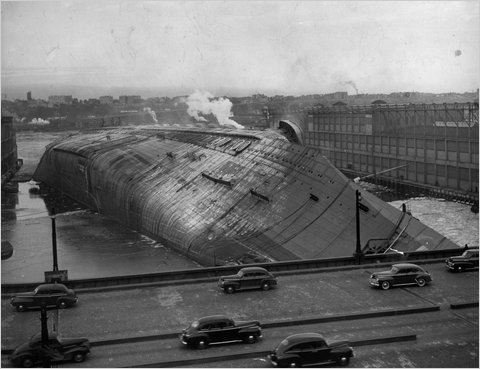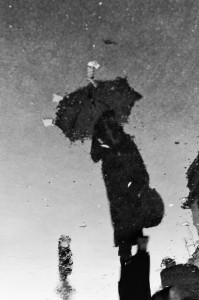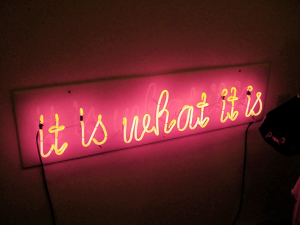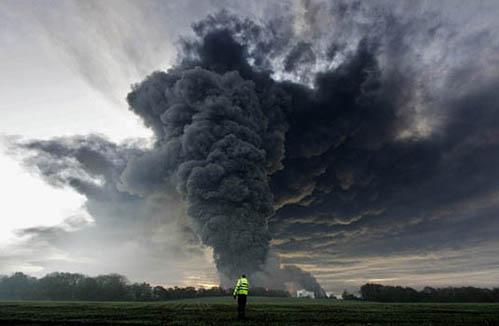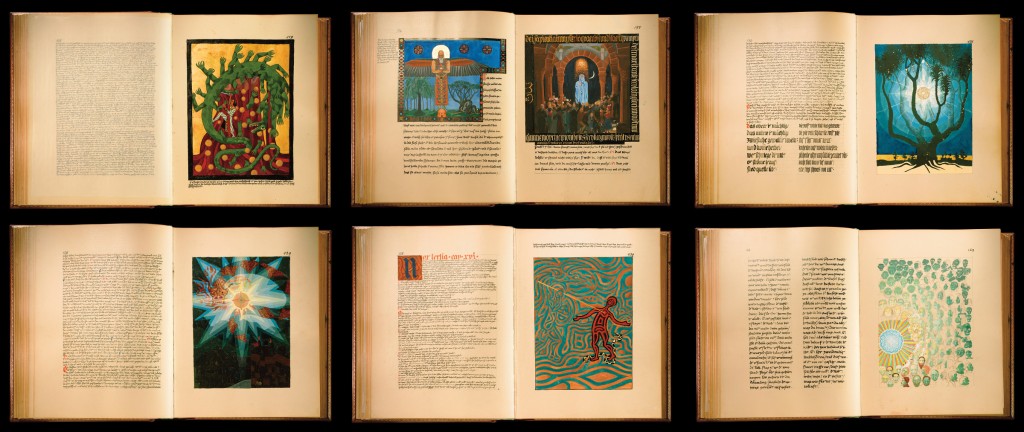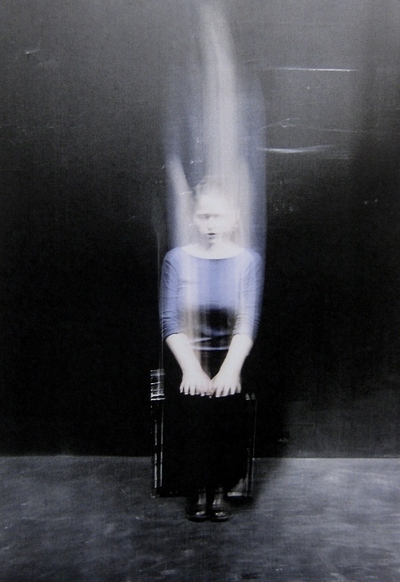Notes on a talk by Michael Stone, Centre of Gravity, Toronto. September 25, 2012. www.centreofgravity.org
Intimate
When we’re practicing mindfulness of breathing, language can set up problems. When we hear the word “mindfulness” we might think mind, while “breathing” equals body. It might seem like the mind is watching the body. We might get the sense that there’s a subject watching an object. It’s important to understand that when we’re meditating the process is to feel breathing, to become the inhale and the exhale, to erase the observer. We’re not standing back and observing, we’re intimate, we’re part of what’s happening right now. In order to feel the breath in a way that there’s no observer, it’s helpful to stay with the body, to focus on the beginning of the inhale. In order to avoid sensations the mind creates images. But our practice is about just breathing with nothing left over, nothing added. Beginning each inhale with a fresh mind.
Kids
The Buddha had a calling. When he was young he was looking into his own experience and saw repetitive grooves of being unsatisfied. The depth of his discontent was proportional to the depth of his awakening. And we could say the same for Jung. Since he was young Jung felt a split in himself. On the one hand he was trying to relate to kids his own age and study math, while another part of him belonged to another century. To keep these two parts togther he developed rituals involving stone and fire. Perhaps there’s something that’s happened to all of us as kids that brought us to this room tonight. Our ability to drop in to our dis-ease is a measure of our commitment. For both Jung and the Buddha the goal of the path is not to be happy but to be free.
Calling
The process of waking up means listening to a calling in our life. Through dreams, daydreams, pictures. The way you are called to certain literatures, spiritual practices. Jung was interested in what happened when you don’t pay attention to these callings. This is what he felt many of his patients were suffering from.
Being related to your calling: what wounds you, names you. Jung and the Buddha had an allegiance to what wounded them and they dropped in.
Each of you has your own light,
if you try to see it you can’t,
the darkness is dark, dark.
What is your light?
Yunmen
When you’re fully breathing, then you’re not there anymore, there’s no separate you. Either you’re in the light or you’re looking for the light. Jung liked to say that if something’s unconscious, it’s unconscious. You can hear an echo of this sentiment in the line: “the darkness is dark, dark.” Where do you go to find light? You have to be in a place which includes darkness. The Buddhists call this “maha” – maha indicates something so large that it includes opposites. Life and death. It holds both. Jung’s concept of the self is maha – it contains both the conscious and the collective unconscious (which is vast, infinite, and unknowable). You can never know the end of the self.
Drop Out
In 1913 Jung finally split with Freud and dropped into a long period of introversion. He withdrew from almost all of his academic and professional duties, stopped writing, and gave up the presidency of the International Psychoanalytic Society. He also left his post at Zurich University. He gave up relations with many of the people around him, he gave up success because deep in his heart he heard a calling. He knew there was something in the psyche that couldn’t be contained in Freud’s descriptions. He felt an irreconcilable split in himself and the pull of urges, dreams, voices, hallucinations, images. “The years when I pursued my inner images were the most important of my life, in them everything essential was decided. It all began then; the details are only supplements… and at first it swamped me. It was the prima material for a lifetime’s work.” (Memories, Dreams, Reflections by Carl Jung. p. 199)
Jung was disoriented. For a while he described himself as being suspended, in mid-air. He had no idea how to proceed or where to go. Leaving Freud meant leaving the structure of how he thought about himself. By leaving the club of psychoanalysis Jung was also letting go of the framework he used to see his inner life. Jung found himself alone, drifting in the sea of the unknown. “The dialogue with myself became uncomfortable and I stopped thinking. I had reached a dead end.” (ibid, p. 171)
Writing
He turned back to the language of religion and started seeing that his life was held together by some deeper meaningful pattern and he had to drop down into it to know what was there. What we he dropping into? Was he splitting off into schizophrenia? Psychosis? He says over and over in his biography that at the time he felt he had no choice. He was at the “edge of a cosmic abyss. It was like a voyage to the moon, or a dscent into empty space.” (ibid, p. 181) At night images were coming to him fast and relentlessly. Jung recalled his work with schizophrenics in the Burgholzli Hospital and knew his situation was serious. He started writing, making connections between what he was seeing and important passages from his intellectual heroes: Holderlin, Nietzsche, Goethe, Frobenius, Vishvakarman, Robens and others. He began writing using quotes from others, he was writing to keep himself together. He wrote for two months and thenn put his books away because his theoretical constructs couldn’t help him.
For Freud, the world of religion and myth was an illusion with no future for our advancing culture. For Jung, images and myth were a way of dropping into and regulating a disordered psyche. Jung though the ancestral myths and images could help us find an anchor as a split culture.
Fragments
He felt though that his first obligation was to go down into the depths of his psyche no matter what. He was hallucinating both auditorally and visually. He thought fragmentation was necessary for psychic growth. He argued with staff at the clinic where he was researching that the fantasy world of schitzophrenia was, at bottom, a positive attempt to cope with reality. Some kind of fragmentation happens before wholeness.
He thought that what appear as voices or distinct personalities in hallucinations or dreams were exaggerated versions of inner dynamic tensions within the psyche. He thought figuring out what the tensions were would lead to health. Now he had to discover his own. He trusted that the psyche was a self-regulating system, always trying to achieve a state of equilibrium.
Dream
He had a recurrent vision of a monstrous, destructive flood that crashed over the northern and low lying lands between the North Sea and the Alps. The waves hurled forward, and as the flood came towards Switzerland, he saw the mountains reach up to protect the cities. The floating rubble of civilization and drowned bodies of thousands turned the sea into a tsunami of blood. Waves of blood covered Switzerland.
He had a recurrent vision of a monstrous, destructive flood that crashed over the northern and low lying lands between the North Sea and the Alps. The waves hurled forward, and as the flood came towards Switzerland, he saw the mountains reach up to protect the cities. The floating rubble of civilization and drowned bodies of thousands turned the sea into a tsunami of blood. Waves of blood covered Switzerland.
This recurring dream/vision left him nauseous and feeling powerless. The visions usually lasted an hour. In another vision, Arctic waves crashed onto land killing thousands. Later the Arctic dreams became images of almost frozen waves turning into leaf bearing trees.
These dreams happened just before the first world war. Just saying. His dedication to painting kept him holding on. He didn’t know what he felt. He thought his emotions had become images. Something in Jung allowed him to avoid a total psychotic break.
Dream
Eventually the image of the frozen wave became a succession of images in which frost transforms into grapes with healing juices. He also had dreams of falling through a hole in the earth. When he stayed attentive to his dreams and visions, day after day, he started to see themes that moved from total destruction and horror to healing and new growth. He remembered nearly falling through rungs as a child and he also sees huge stone blocks tumbling down on him.
Dream
In 1912, approaching Christmas, Jung had a dream where he was on a balcony of Italian design, with pillars, a marble floor and an expensive balustrade. He is sitting on a gold Renaissance chair in front of a stunning table made of green stone resembling emerald. His children are gathered around him. He looks out into the distance and realizes he is in the tower of a castle. (ibid, p. 171)
Dream
This dream is followed by one where a messenger dove lands and is transformed into a girl with golden hair who goes off to play with children. The small girl returns later and puts her arms around Jung’s neck. Then, as she vanishes, a dove appears and speaks in a human voice: “Only in the first hours of the night can I transform myself into a human being while the male dove is busy with the twelve dead.” (ibid p. 172) She flies up into the sky, which is blue, and Jung awakens.
Images
After this dream he had a series of images where a person would become older, moving back through centuries. There was a sense that Jung himself was moving into the deeper recesses of his psyche that are ancestral and beyond time.
New Year passed. In early January 1913 Jung was sitting at his desk when suddenly he let himself go and dropped through the earth. “The ground literally gave way beneath my feet and I plunged down into dark depths. I could not fend off a feeling of panic.” (ibid, p. 179)
There’s places in practice where we stall, we don’t seem to move for a long time, we hit a plateau. And then it’s time to drop deeper. Sometimes it take such courage to sit with our anxiety – do you have the courage to say: what’s deeper than this? Are you possessed of the curiosity to ask, to need to know: what’s behind this? What’s underneath? Or do you identify with the anxiety and then shift into something else, some new distraction. Staying inside the familiar cycles and patterns. Ordering the same menu items.
Vision
He was in a dark cave and across from him stood a dwarf with leathery skin. He waded through the icy cave water where he saw a glowing crystal. It was red. There was running water and a corpse floated by him. Looking closely he noticed she was young, with blonde hair, and had a wound in her head. She was followed by a gigantic black scarab and then by a red, newborn sun, rushing up out of the depths of the cold, dark water. Transfixed by the light of the rising sun, Jung tries to replace the stone over the opening to the cave but a fluid wells up. Blood starts spurting from the stone for a long while. Finally the vision ends.
By the end of 1913, he fills 1330 pages with descriptions of dreams and images. His handwriting changes to a style from the 14th century. He teaches himself how to make pigments and mixes his own paints. By 1915 he has 600 typewritten pages of notes, along with hundreds of paintings that he calls The Red Book.
Spirit
He describes his book as an interaction between “the spirit of the times” and “the spirit of the depths.” He writes, “… I did not pause to consider that the spirit of the depths from time immemorial and for all time to come possessed a greater power than the spirit of the times, who changes with the generations and withers with the flowers of summer.” (cited in The Wounded Jung by Robert C. Smith, Evanstone: Northwestern University Press, 1996, p. 7)
Jung realizes he’s actually two people: part of him is narrow – that’s the spirit of the times. The part of him that’s constantly telling a story about ourselvbes is the spirit of the times. The spirit of the times is clinging to culture, and the culture of creating our own self identity and identification. The other part is the spirit of the depths, it connected to the part of Jung that felt himself an old man that belonged to another century.
One gift of Freud and Jung we should never forget is that the psyche is grounded in human culture, art, literature, myth and gods rather than medicine, equations and genetics. The Greek gift of tragedy never goes away. The Greeks and the Buddha articulated tragedy in different ways. Today we live in a tragedy too. We can help so many physical ailment but we have lost the heart in medicine. The heart is poems and art and the callings in dreams. When therapists speak to patients it’s easy to miss something, how to find the time to find the world of dreams and myth that the patient is? We must help our patients get in touch with the way our psyches speak. If you lose everything, you may also be lucky enough to lose who you thought you were.
Buddha and Jung have an allegiance to the fallen world. An allegiance to brokeness, multiplicity, being unsatisfied, being in a body, the problem of being separated from what we love. Fear and fearlessness. For Jung the problem is that we think we’re separate from this deeper world. Once you open the door the world starts coming in. There is a liberating truth available when we find ourselves out of balance. Jung represents the voice of psyche. Once you open the door to what comes in the night you are open to what comes in during the day. So at night you are practicing for the day. The world is always coming to us. Paying attention to what’s arising is love.
Saturn
When I was in my twenties I got very interested in Saturn. The Greek myths around Saturn. Oh, I feel another tangent coming on. To drop into the world of Saturn is to become more flexible even as the planet exerts all that pressure, the pressure of the rings. When I started to practice in a full time way I wanted to be enlightened… and I was depressed for three years. One of the things I tried to do at the time, apart from doing practice, was turning to Carl Jung. Because Jung described depression as a potentially creative state. In our culture it seems we are valued because we produce, we live to produce. Jung had this idea that our psyches have a purpose, and that they’re self regulating. When we get depressed, the larger cultural pattern is to insist that we get rid of it as soon as possible. Why? Because we need to be returned to our roles as producers and consumers. What do we do with the people in our society who can’t handle the speed and ferocity of capital productivity?
Blue
Depression is about being low, sad, slow, blue. How many songs did Duke Ellington write that contained the word “blue” in the title? How can we listen to our depression, to our sadness? How can we abide in a lower, slower way of being? It can become so painful when we’re trying to get out of it all the time. Do you think we could treat it like a God? As if it were something we’re devoted to? Shankaracharya wrote a yoga text that turned all of the techniques into deities. There were goddesses of the throat, of the inhale, the exhale, the mula bhanda… If you don’t do LSD anymore, you can just do these devotional practices. What I’m going to practice is devotion to whatever is arising.
Jung develops a creative life out of his devotion to depression. Both Jung and the Buddha had an allegiance and devoted themselves to what wounded them. To be able to be intimate with what’s showing up without running away. To help others be interested in their inner lives. How do we drop into the calling of our inner lives? The punchline is that if you’re willing to lose everything you might discover who you are. What Jung opened up to was uncertainty. Uncertainty makes freedom possible. Answers make the view small and certain, while questions allow us to open to possibility. Can we ask the question, can we hold it, can we become the question? Uncertainty is beginner’s mind. Beginner’s mind is a mind of creativity and compassion.
The process of healing only happens through intimacy. To be intimate with how we feel, to be intimate with the slower pace of the body that is threatening to our cultural view of ourselves. Poets do this but they’re going extinct. Our guides can help us because they can see the maps. You can’t go through this without a guide. Jung’s guide was pictures.
I don’t hear Jung in his autobiography trying to work through issues. He’s just dropping in. Meditation isn’t about fixing problems, it’s about being fully awake to whatever is showing up. You might trust in the workings of the unconscious, its self-regulating, compensatory methods. Its ability to open you to a wider, mythological view. And you trust in the container of the practice to hold you as you drop in. To lose control in a container that can hold us.
